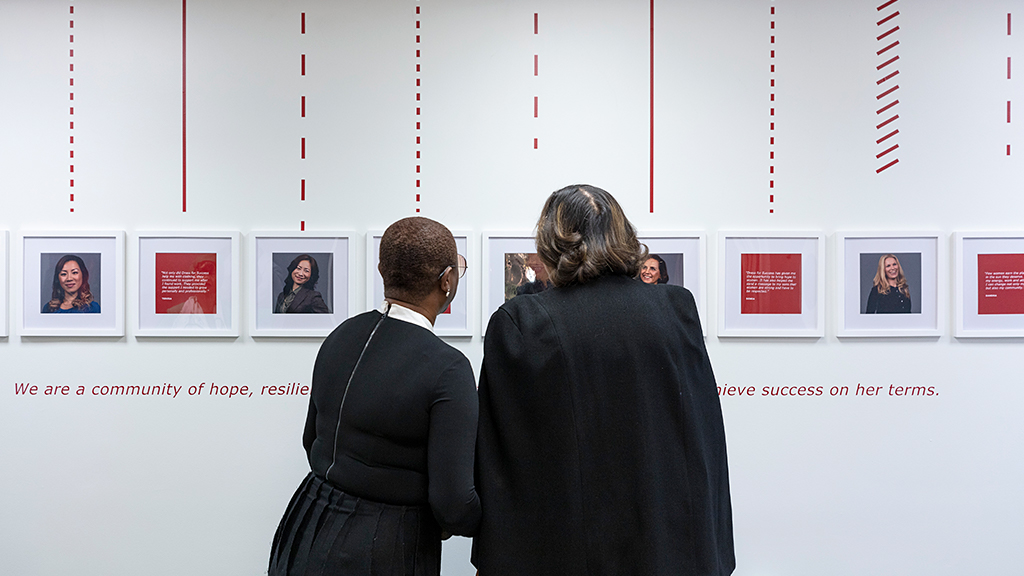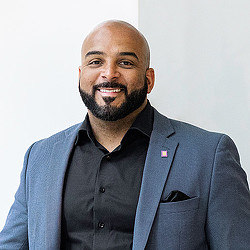Wellness Design at the Intersection of Equity and Sustainability
February 24, 2021 | By Jason Pugh
Design thinking has solved the world’s biggest challenges, and the COVID-19 crisis — partnered with the economic and social justice movement — is no exception. Designers are trained to use challenges like this moment as catalysts to pave an optimistic, resilient, and equitable path forward that prioritizes wellness for all.
Ensuring that the most vulnerable and underserved communities have healthy places and spaces begins with quality design that supports the well-being of everyone. As designers, we have an obligation to protect the health, safety, and welfare of the general public across all social-economic classes — and it's important the lead designers and planners of these projects reflect the very same communities. By building diverse teams of designers who can bring unique experiences, considerations, and voices to the design process, we can truly create spaces with all users in mind.
Evolving Wellness Design to Include and Better Protect At-Risk Communities
Enhancing the wellness for the future of our cities requires a twofold approach — creating more equitable and accessible spaces across disfranchised and underserved communities, as well as focusing more on wellness projects that are specifically designed by BIPOC and minority professionals. These two goals are inclusive of each other and are considered “designing to the edges." By welcoming and bringing together the client, designers, and the community on projects, I believe we can deepen our collective understanding of context, purpose, and unique perspectives to positively influence the human experience throughout our communities.
To truly advance wellness across sectors and communities, taking into account all people’s stressors and physical, mental, and emotional well-being, cities need to collectively consider the trifecta impact of economics, governance, and health. The pandemic has shined a spotlight on the inequities within our day-to-day living conditions, and the apparent service gaps across minority communities as a whole. Some of the strongest contributors to satisfaction with our health and wellness of the built environment have been directly tied to safety, accessibility, and responsive action by governing city and municipality leadership.
We know that today’s pandemic is disproportionately impacting minority communities, particularly Black and Brown people. Likewise, many studies have shown that minority communities are among those most affected by another crisis — global warming and its associated heat island effect, due to extensive hardscape and coarse landscaping and vegetation found in urban environments. How can today’s challenges push urban design to evolve to better protect at-risk communities, create equitable access, address service gaps, and promote well-being, health, and sustainability?
Focus on Climate Change and the Well-Being of the Built Environment
When I first entered the field of architecture 15 years ago, a wave of sustainability, green design, and LEED was sweeping through the industry. It seemed like every practitioner, every project, and every firm was focused on educating our clients and the community at large on the importance of sustainability — and the negative impacts construction and development had on our environment. As these principles took hold and awareness grew, architecture firms raced to market and promoted the number of LEED AP employees they had or the number of LEED Silver, Gold, and Platinum-certified projects they completed.
While climate change remains a critical challenge and a focal point of the new President Biden’s administration, over the years, sustainability and green design have become an intricate element of all projects. These core values have been absorbed and woven into the fabric of Gensler’s practice and overall design industry. As Gensler continues to work to achieve carbon neutrality goals by 2030, we know that we have a long way to go, but the industry now benefits from certifications, standards, and streamlined processes that can help implement change and establish metrics systems to track progress.
In 2019, Gensler worked on over 7,000 projects representing over 1.5 billion square feet of space. Our 2019 work is designed to save 16.4 million metric tons of CO2 emissions — the equivalent of taking 4.2 coal-fired power plants offline for an entire year, or the power needed for 1.9 million homes for a year. And this is just the start.
Diversity, Equity, and Inclusivity Initiatives Can Permeate — and Shift — the Design Industry
Now an urgent new wave of momentum is sweeping through the industry: diversity, equity, and inclusivity. We are making critical progress in the industry with many big firms leading the way, including Gensler, which has established a committee on 5 Strategies Against Racism. As committee co-chair, I focus on creating job opportunities for Black professionals in the design industry, one of five pillars of action the firm is taking to create an equitable future within our firm, our industry, and our global communities. I also serve as the incoming president of The National Organization of Minority Architects (NOMA), where I work to connect with partners from allied organizations and companies to join us in leading that charge.
I truly hope that 15 years from now, the equity, diversity, and inclusion initiatives and key strategies that we collectively push forward during this pivotal moment, will also become woven into the fabric of our industry and practice — much in the same way sustainability was absorbed years ago. Through infrastructure advancements, new design solutions, changes to policies and programs, and innovative, community-oriented tactics, the industry can evolve to create a lasting impact on the post-pandemic urban experience.
And while addressing climate and building resilience in our cities naturally has an influence on wellness for the people in and around those cities, we know that directly offering healthcare and wellness services through community-based models would further reduce barriers, create equitable access, and deliver a more holistic wellness experience for residents.
Both education and access to health-oriented resources are the primary drivers to creating deep-seated change in wellness. A community-centric approach also creates economic boosters in the areas that need healthcare access most. This can spur new opportunities for careers and job growth in healthcare, technology, and design, bolstering sustained growth and livability — without changing or gentrifying the neighborhoods that make our cities vibrant and diverse places to live, work, and play.
For media inquiries, email .

